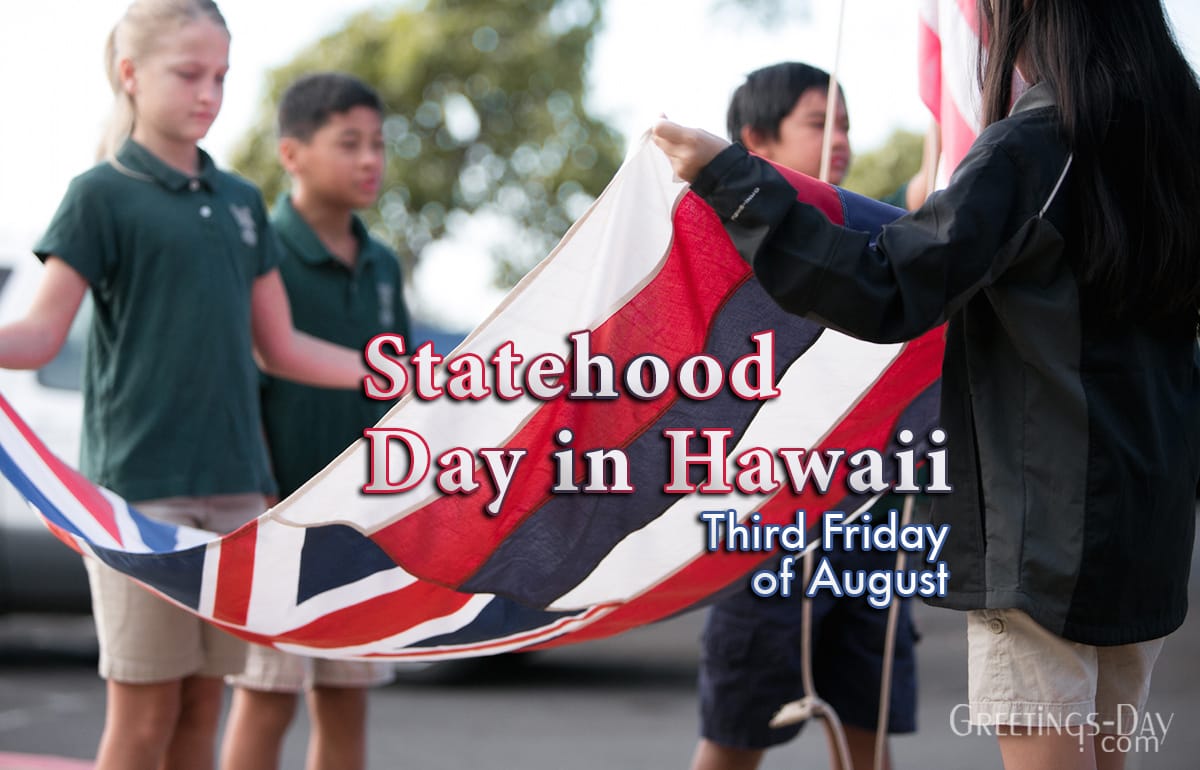Hey there, Hawaii lovers! Get ready to mark your calendars for Statehood Day 2024, coming up on the third Friday of August. This day is all about celebrating Hawaii’s unique spirit and history. But Statehood Day isn’t just about popping open a few cans of Kona beer. It’s also a time to remember the long and complex road that Hawaii took to become the 50th state. Let’s take a closer look at this special day, its significance, and the events that shaped Hawaii’s destiny.
A Day of Joy and Reflection
Every year on August 21st, the islands of Hawaii erupt in celebration, marking their official entrance into the United States as the 50th state. It’s a day filled with colorful parades, traditional hula dances that tell stories with every graceful move, and the inviting aromas of local favorites like kalua pig and poi. This is Hawaii Statehood Day, a day of pride and joy. But behind the festivities lies a history filled with both triumph and struggle, a past that continues to shape the present-day reality for many Native Hawaiians.
The Path to Statehood: A Winding Road
The journey towards becoming a state was anything but simple. It’s a story that stretches back to 1893 when the Hawaiian monarchy, the governing force of the islands for generations, was overthrown. This event cast a long shadow, and the fight for self-determination never truly faded for the Native Hawaiian people.
Throughout the early 20th century, figures like Prince Jonah Kuhio Kalanianaole emerged as powerful advocates for Hawaiian rights. As a delegate to Congress, Prince Kuhio understood the importance of representation and relentlessly pushed for greater autonomy for his people. His efforts, along with the persistent voices of many others, paved the way for the moment in 1959 when President Dwight D. Eisenhower signed the Hawaii Admission Act, officially welcoming Hawaii into the United States.
A Legacy of Aloha and a Complex Past
Today, Hawaii Statehood Day is a vibrant blend of honoring heritage and acknowledging the complexities of the past. While the day celebrates the spirit of Aloha, the warmth and welcoming nature so deeply rooted in Hawaiian culture, it also prompts reflection on the impacts of statehood, both positive and challenging.
Hawaii’s economy, once reliant on sugar cane plantations, saw a dramatic shift with statehood. Tourism boomed, drawing visitors from across the globe eager to experience the islands’ beauty. But this influx also brought new dilemmas. The very culture that made Hawaii so alluring became commercialized, sometimes exploited, leading to important conversations about cultural appropriation and the delicate balance between sharing tradition and preserving its integrity.
For many Native Hawaiians, the pursuit of sovereignty, the right to govern their own affairs and determine their own future, remains a deeply personal and significant struggle. Their voices add crucial layers to the story of Hawaii Statehood Day. They remind us that while the islands are a paradise for many, the fight for true self-determination for Native Hawaiians is an ongoing journey.
Do Hawaiians Celebrate Statehood Day?
So, we’ve established that Statehood Day is officially a thing in Hawaii. But the real question is, do people actually celebrate it? Well, it’s complicated.
On the one hand, you’ve got parades, festivals bursting with color, and traditional dances. It’s a chance for everyone to soak up the vibrant Hawaiian culture and island spirit. For many, it’s a day of pure joy and pride.
But then there’s the other side of the coin. For some Native Hawaiians, especially those whose families have been directly impacted by the events of 1893, Statehood Day stirs up difficult emotions. The overthrow of the Hawaiian monarchy and the subsequent history of US colonialism aren’t exactly cause for celebration. Some see it as a stark reminder of a painful past and an ongoing fight for sovereignty.
Interestingly, younger generations seem to have a more nuanced view. Some embrace the day as a chance to honor their heritage and celebrate how far they’ve come. Others see it as a platform to raise awareness about the fight for self-determination and spark important conversations about the future.
The bottom line is, there’s no easy answer to whether or not Hawaiians celebrate Statehood Day. It’s a day filled with layers of meaning, a tapestry woven with joy, reflection, and a yearning for a future that honors the past. One thing’s for sure: it’s a topic that continues to evolve and spark important conversations about identity, history, and what it truly means to be Hawaiian.
When is Statehood Day?
Hawaii officially became the 50th state of the United States on August 21, 1959. This historic event was a pivotal moment in Hawaii’s journey. It marked a significant step towards self-governance and integration into the fabric of the American nation.
The journey to statehood was a long and winding road, filled with complexities. For instance, Native Hawaiians had been striving for greater autonomy and recognition of their sovereignty since the overthrow of the Hawaiian monarchy way back in 1893. However, it wasn’t until the mid-20th century that things really started to move.
The legacy of Hawaii Statehood Day is multifaceted, to say the least. While it’s certainly a day of joy and pride for many, it also stirs up reminders of Hawaii’s complex history. The colonial past and the ongoing quest for Native Hawaiian sovereignty add layers of nuance to the celebrations. Today, Statehood Day serves as a valuable opportunity for reflection, celebration, and continued dialogue about Hawaii’s unique place within the broader narrative of American history.
Who Were the Key Players in Hawaii’s Statehood?
Hawaii’s journey to becoming the 50th state wasn’t a simple one. It actually involved a number of groups, both in Hawaii and on the mainland U.S., casting votes and making decisions. Think of it like a big old chain reaction, with each step leading to the next.
First off, you had the people of Hawaii themselves. They were the ones who really pushed for statehood. For years, they’d been advocating for more control over their own destiny, and by the mid-20th century, that movement had gained some serious steam. So, when it came time to decide if they wanted to be a part of the U.S., they held a vote. And guess what? The vast majority said, “Yes!”
But that was just the first hurdle. Next up? The U.S. Congress. You see, for Hawaii to officially become a state, it needed the thumbs-up from the folks in Washington D.C. Both the House of Representatives and the Senate had to vote on the “Hawaii Admission Act,” which essentially recognized Hawaii as the 50th state. And after some debate and discussion, both chambers of Congress passed the act.
Finally, the decision landed on the President’s desk, which at the time belonged to Dwight D. Eisenhower. He had the final say – to sign the act into law or not. And on August 21, 1959, he put his John Hancock on the dotted line, making Hawaii’s statehood official.
So, to answer the question “Who voted to make Hawaii a state?” It wasn’t just one person or one group. It was a combination of the people of Hawaii making their voices heard, the U.S. Congress giving its approval, and the President sealing the deal.
Embark on an exciting journey to convert 8mm to inches effortlessly, unlocking a world of precise measurements. Immerse yourself in the vibrant tapestry of Elko’s thriving population, where the spirit of community flourishes amidst stunning natural landscapes.
















